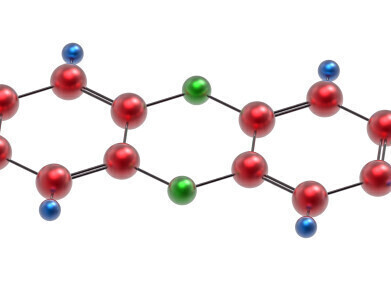GC-MS
What Makes the Unique ‘Scots-pine’ Smell? — Chromatography Explores
Jun 22 2018
Pine is a commonly used wood for all different applications. Its mechanical properties — good elasticity and strength — enhances it use as a building material and its decorative appearance means it is used for furniture and other household uses. As a conifer, it is easy to grow in many places in the world from south-east Asia, North America and Europe.
Another favourable property of pine trees is their pleasant odour — variously described as pleasant, natural and fresh. The smell of pine alongside its decorative properties increases its appeal as a material used in toys and as a decorative building material. It is these odour properties that are captured in pine essential oils which are used in natural household cleaners, disinfectants and air fresheners. The aroma of pine is reportedly associated with relaxing the human body and spirit after research showed that it reduces stress markers in animal studies. But what is it that makes pine smell so piney?
Woody odours — unknown sources?
In Germany, Pinus sylvestris L. is one of the most common trees and finds its way into many homes as the source of many wood products. So, a team of German researchers decided to find out what components cause the unique pine smell of Pinus sylvestris L. or Scots pine. In a paper published online in Nature Scientific Reports — Resolving the smell of wood - identification of odour-active compounds in Scots pine (Pinus sylvestris L.) — they set out to demystify the scent of Scots pine.
The team report that there are not many studies on wood odorants, and those that have been carried out focus on the relevance of wood odorants for alcoholic drinks. They have previously identified the main odorants in cedar wood — the wood that gives high quality pencils their unique smell. Now they decided to turn to Scots pine.
Smelling the wood with chromatography
They started out by getting wood samples rated in terms of pleasantness and intensity of pine aroma. The underlying active substances behind these descriptions were then analysed using gas chromatography olfactometry (GC-O) that allowed the team to detect 44 odour active compounds. From these compounds, 39 were identified using a combination of gas chromatography-mass spectrometry/olfactometry (GC-MS/O) and two-dimensional gas chromatography-mass spectrometry/olfactometry (2D-GC-MS/O). The use of multi-dimensional gas chromatography is discussed in the article, Comprehensive, Non-Target Characterisation of Blinded Environmental Exposome Standards Using GCxGC and High Resolution Time-of-Flight Mass Spectrometry.
The team were able to show that there was close agreement between the sensory and gas chromatography results, so certain compounds could be related to certain aroma characteristics like resin-like, cardboard-like and grassy. They also reported 11 substances for the first time as odour-active components in wood including heptanoic acid, γ-octalactone, δ-nonalactone and (E,Z,Z)-trideca-2,4,7-trienal.
Which of these will you find in your pine disinfectant?
Events
May 18 2025 Tempe. AZ, USA
May 21 2025 Birmingham, UK
Jun 01 2025 Baltimore, MD, USA
Jun 15 2025 Bruges, Belgium
Jul 14 2025 Kuala Lumpur, Malaylsia














